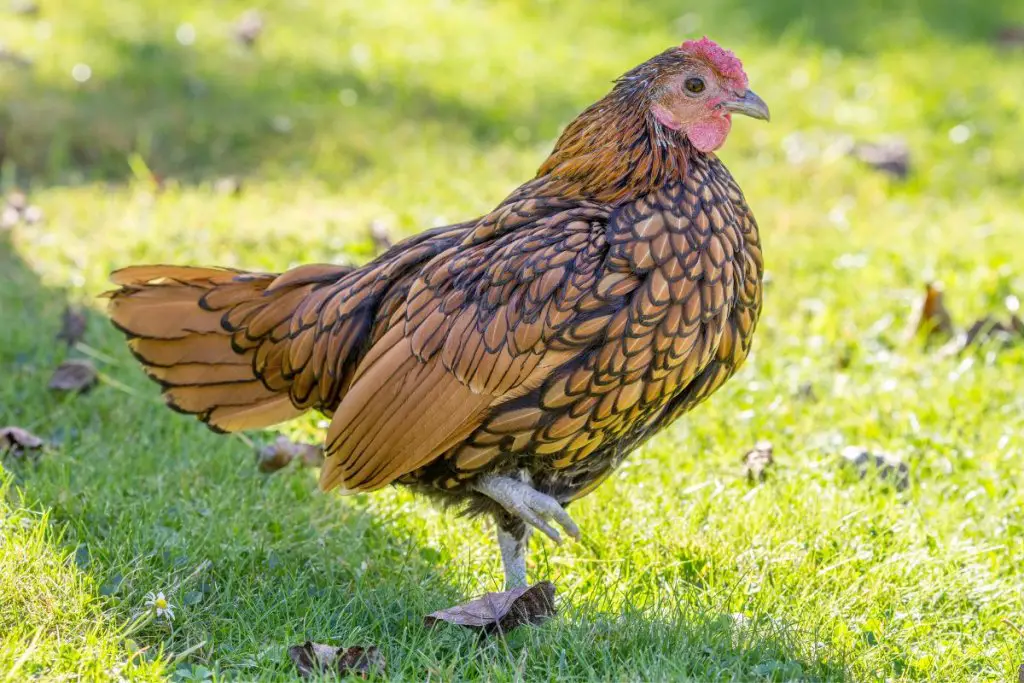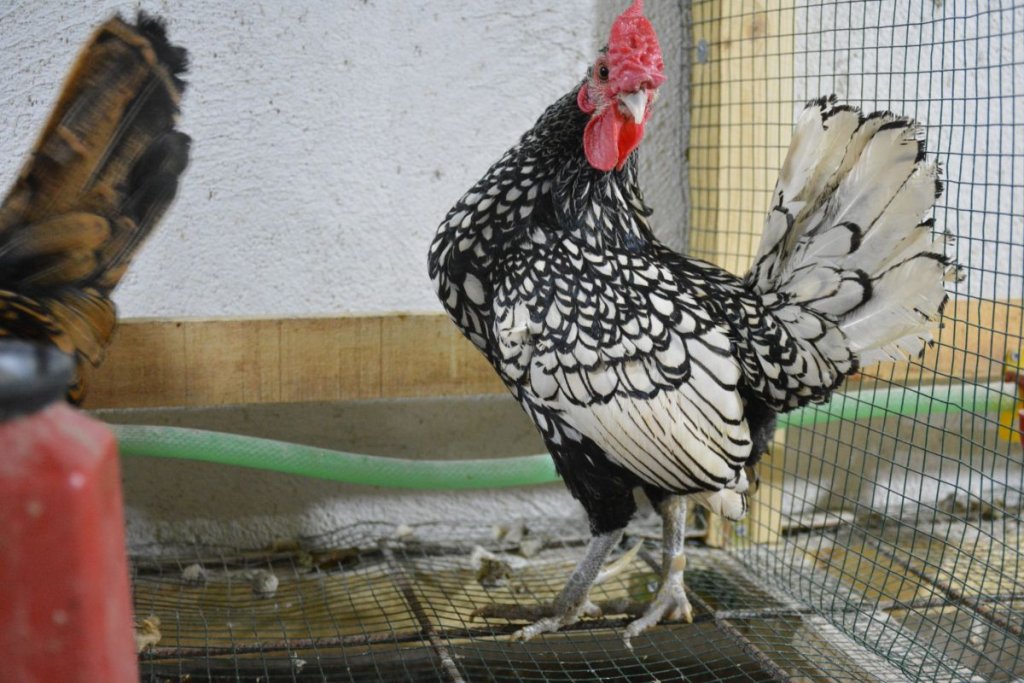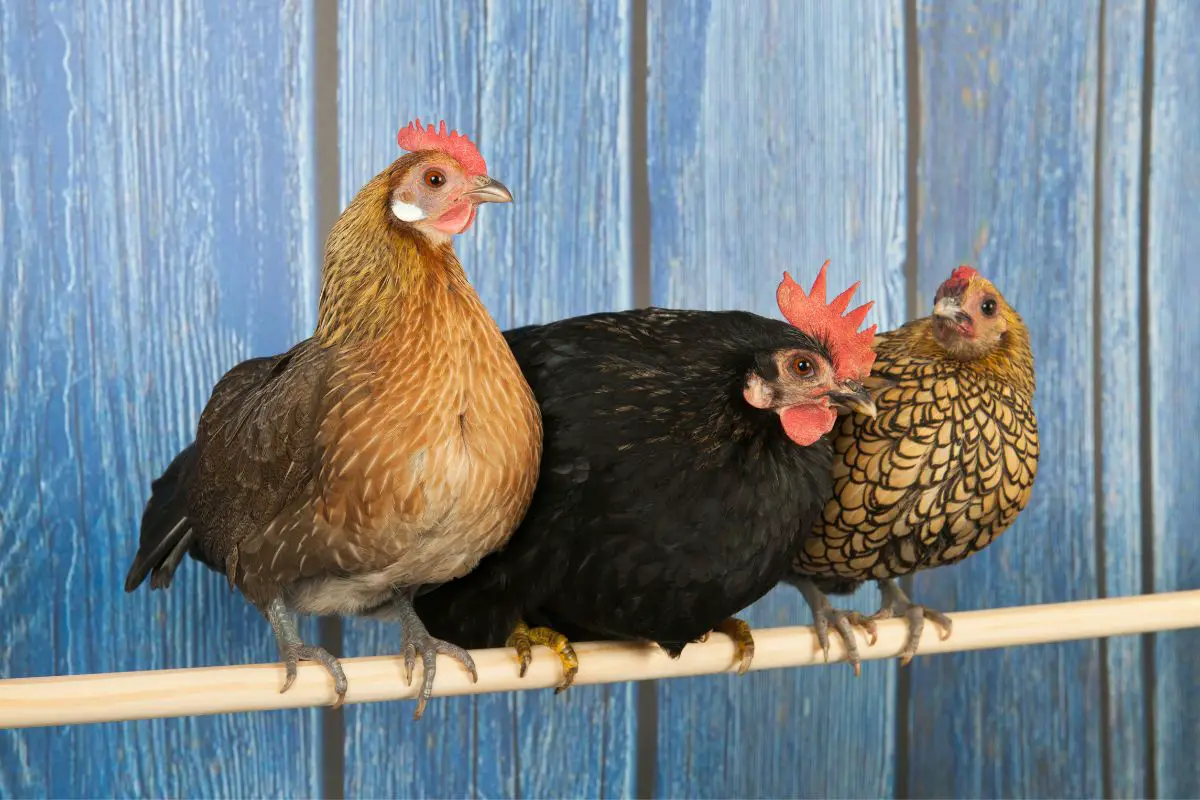The Sebright Chicken has very limited egg production (60 to 80 eggs per year) and also isn't suitable for meat production. However, they are beautiful and friendly birds that make for a wonderful backyard pet rather than an egg-producing machine.
Choosing the right chicken to match your farm’s needs can be a difficult decision.
With there being hundreds of breeds around the world to choose from, making the right choice can at times feel overwhelming. So it is important to learn what each breed can bring to the table, sometimes literally, by considering a breed’s different attributes.
This article will focus on one of these many breeds: The Sebright.
Table of Contents
What is a Sebright chicken?
Sebright chickens are a small, British breed of the bantam variety. They are true bantams, meaning that they don’t have a larger counterpart breed of a similar resemblance. Sebrights get their namesake from their creator, Sir John Saunders Sebright, who created them in the early 1800s.
Sebright wanted to create a true bantam that had a highly contrasting laced plumage and a coloration that would stand out from other bantam breeds. He accomplished this by breeding several types of birds, namely of Nankin, Polish, and Hamburg varieties.
After about 30 years of breeding, Sebright was happy with how the breed had developed. He went on to create The Sebright Bantam Club, the first true single-breed chicken association which continues to be popular to this day.
The American Poultry Association officially recognized the breed in 1874, and Sebrights have since been regarded as one of the oldest true bantam breeds in the world. This makes them highly popular amongst breeders and enthusiasts who prefer to seek out remarkable small chicken breeds.
What does a Sebright chicken look like?
Since they were developed as true bantams primarily for their aesthetics, Sebright chickens are striking birds to behold. As an ornamental breed, there are several characteristics that stand out for their appearance.
The first thing to note is their coloration, and they are most known for the two most popular colorways: gold-laced and silver laced. The lacing of the feathers contrasts beautifully in both colors, giving the Sebright chicken an almost stained glass appearance.

Sebrights have rose combs that are red and come back to a distinguished spike. As is common with most breeds of chicken, males have slightly larger combs than females, though the comb is still quite prominent on the hens.
The bright red coloration of the comb contrasts brilliantly with both the golden and silver varieties.
One attribute that makes Sebright chickens unique is that the roosters are hen-feathered, meaning that they don’t have the typical feathering traits that would set them apart from hens such as longer hackle, saddle, and tail feathers.
Cocks are most easily distinguished from hens by their slightly larger size, longer comb, and bigger wattle, but both males and females are known for their short backs and long, prominent breasts.
How long for a Sebright chicken to reach full size?
As is true of most bantam chickens, Sebrights are small. Sebright chickens will reach their full size in about 16-22 weeks, at which point they will only be about 20-22oz in weight. Since they were intentionally bred to be a small, ornamental breed for competitive showing, Sebrights typically aren’t kept for their meat.
However, once they’ve reached their full size, Sebright chickens are usually a very healthy breed that has a solid lifespan of between 8-12 years. They are hardy, and can resist colder temperatures; although, due to their small size, they still succumb to weather easier than larger breeds.
Warmer climates are certainly preferable, as Sebrights flourish and will breed at a more successful rate.
Sebright Chicken Egg Production and Color
Sebright chickens aren’t the most prolific egg layers, averaging only about 60-80 eggs per year. The eggs are a beautiful, bright white color that tend to have a slight pink hue.
Even though bantam-sized eggs are smaller than standard eggs, they still are just as delicious and edible. Hens are rarely broody, which is perfect for egg production but can lead to some difficulties in the breeding process.
Breeding Sebright Chickens
When hatching, Sebright hens are often off foraging and avoiding their motherly duties, so eggs are often given to other more broody breeds for the incubation process.
Another factor that makes Sebrights difficult to breed is seen in their genetic makeup. It is theorized that the breeding process that made roosters have more female traits, such as their hen feathering, also complicated their levels of fertility.

Sebrights are also vulnerable to Marek’s disease, which will cause a variety of health issues and will in turn affect breeding. This is the reason that it is recommended Sebright chicks receive vaccinations against Marek’s to help prevent the contraction of the disease and to combat the chicks’ high mortality rates.
Sebright Chicken Personality
On the farm, Sebright chickens are often considered a curious and adventurous breed. Often seen foraging, Sebrights will tirelessly explore their environment and are perceived as being rather independent.
Despite their quirky personality, Sebrights are also very friendly towards humans, are easy to tame in most settings, and are rarely aggressive.
Building a Secure Coop
They are flighty, being quite able to fly up into trees, so it is in your best interest to build their enclosure accordingly. Free-ranging Sebright chickens are a possibility, but higher levels of supervision are required to help prevent escape and endangerment.

Their ability to fly and willingness to explore could lead them into tricky situations with predators, so a safe environment, such as a chicken coop, is key to raising Sebrights.
Are Sebright chickens right for you?
Sebright chickens are a beautiful show bird to have around and make for fantastic backyard chickens. What they might lack in meat and egg production, they make up for with their stunning looks and lively demeanor.
While they may not be cuddly, Sebrights are very friendly and will cohabitate well with other breeds.
Because they can be escape artists, make sure that Sebright chickens have a properly enclosed coop. Their curious nature paired with their ability to fly makes Sebrights somewhat difficult birds to care for if you’re just getting started, but they will make for excellent companions to more experienced keepers.
If you’re looking for a small and unique breed of chicken that will add a lot of personality to your farm or backyard, the Sebright is an excellent choice.

